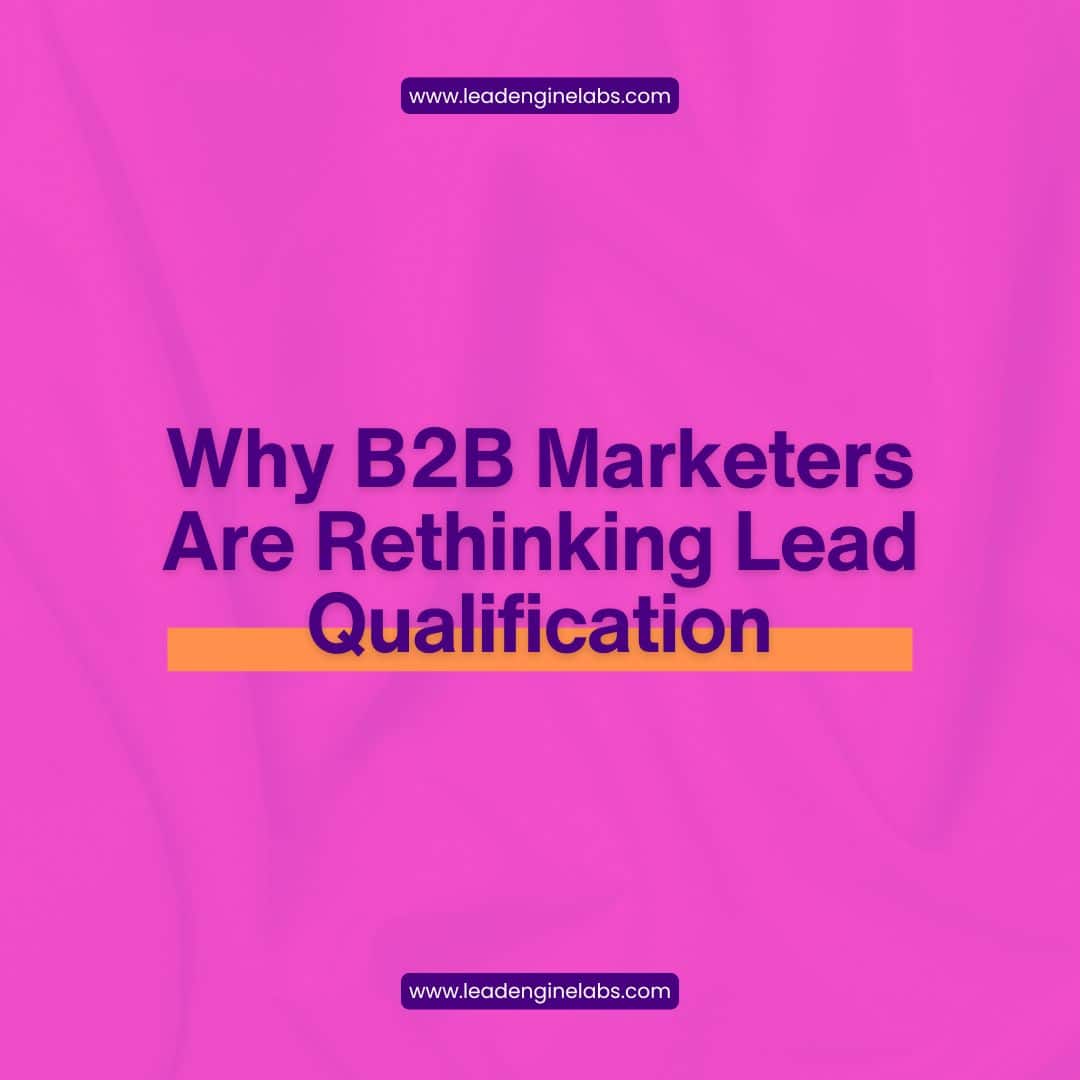Most B2B marketers focus on capturing demand—running ads, ranking on Google, and targeting prospects already searching for solutions. But what if your ideal buyers don’t even realize they need your product yet?
That’s where demand generation comes in.
Instead of waiting for prospects to enter the market, demand generation creates demand by educating, influencing, and shifting buyer mindsets before they start searching. This is how companies like Gong, Drift, and HubSpot built massive inbound engines that drive market dominance.
If your B2B brand is stuck in the cycle of competing for the same bottom-of-funnel leads as everyone else, it’s time to rethink your strategy. In this post, we’ll break down:
- The difference between demand capture and demand generation
- Why most businesses struggle with demand creation
- How to build a demand generation engine that brings buyers to you
The Hidden Power of Dark Funnel Marketing: How to Track and Convert Invisible Leads
What’s the Difference Between Capturing vs. Creating Demand?
Capturing Demand = Competing for existing buyers
- PPC ads, SEO, and retargeting to people actively searching
- Focus on conversion rate optimization (CRO)
- Targets bottom-of-funnel prospects who already know their problem
Creating Demand = Generating new buyers
- Educating your audience on why they need your solution
- Building brand trust before buyers enter the market
- Using content, events, and thought leadership to shape industry conversations
Most B2B companies rely only on demand capture. This means:
- They fight for a small pool of high-intent buyers
- They constantly increase ad spend to stay competitive
- They struggle to create inbound momentum
The best companies do both—capture short-term demand while building long-term market authority.
Why Most B2B Brands Fail at Demand Generation
If demand generation is so powerful, why don’t more businesses prioritize it? Because it requires a mindset shift.
1. They Want Immediate Leads, Not Long-Term Brand Building
Demand generation takes time. Unlike PPC or SEO, you won’t see results in 30 days. Most companies quit too early because they chase quick wins.
✅ Fix: Commit to 6-12 months of audience-building before expecting major returns.
2. They Focus Too Much on Features, Not Category Creation
If your entire marketing strategy is about why your product is better than competitors, you’re missing the bigger play—category creation.
✅ Fix: Educate your market on why your approach is different, not just your product’s features.
Example: Drift didn’t market itself as a chatbot tool. It created the category of “Conversational Marketing”, making buyers demand a new way of engaging leads.
3. They Only Market to Active Buyers, Not Future Buyers
Most B2B companies run ads, email sequences, and cold outreach only to buyers already in-market. But 95% of your potential customers aren’t ready to buy today.
✅ Fix: Start marketing to buyers before they have intent, so when they’re ready, they come to you.
Example: HubSpot educated marketers on inbound marketing years before they ever needed a CRM—so when they did, HubSpot was the obvious choice.
How to Build a Demand Generation Engine
Step 1: Own a Big Idea (Not Just a Product)
The best demand gen strategies start with an idea, not a product.
Ask yourself:
- What industry shift are we leading?
- What is the new way of thinking we want our audience to adopt?
- How do we create a movement, not just marketing?
🔹 Example: Gong didn’t just sell revenue intelligence software. They positioned themselves as the anti-guesswork sales movement, making “gut-driven sales” feel outdated.
Your brand should stand for something bigger than your product.
Step 2: Flood the Market With Value-First Content
Once you define your big idea, educate your audience relentlessly—without selling.
✅ Create “aha moment” content that shifts thinking.
- LinkedIn posts
- Podcast episodes
- Live AMAs and discussions
- Research reports
- Webinars that don’t pitch
✅ Distribute your content everywhere.
- YouTube
- Industry Slack groups
- Newsletters
The goal: Build so much trust that when buyers are ready, they come to you.
Step 3: Use Social Platforms to Dominate Industry Conversations
Demand isn’t built through gated eBooks. It’s built through people-led marketing.
✅ Your execs, sales team, and marketing team should all be active on LinkedIn.
- Share insights, not just company updates
- Comment on posts where potential buyers are engaging
- Start debates and conversations
Companies win when their people are more visible than their brand account.
Example: Chris Walker (CEO of Refine Labs) posts daily thought leadership content on LinkedIn. His organic presence alone generates inbound leads that convert into high-ticket clients.
Step 4: Create Entry Points Before the Buy Stage
Most brands only offer “Request a Demo” as their entry point. But buyers want lower-commitment ways to engage.
✅ Better entry points:
- Free community membership
- Low-ticket offers (mini-courses, audits)
- Private executive roundtables
- Exclusive research reports
Instead of waiting for a demo request, get buyers into your ecosystem early.
Example: Dave Gerhardt’s marketing community (DGMG) built massive demand for agencies before members ever needed services.
Step 5: Balance Demand Creation and Capture
Demand generation isn’t about replacing lead capture—it’s about balancing both.
✅ Short-Term Wins (Capture Demand)
- PPC campaigns
- LinkedIn ads
- Direct response email marketing
✅ Long-Term Wins (Create Demand)
- Thought leadership
- Content distribution
- Brand-building campaigns
The best brands don’t just chase clicks—they create a following.
The ROI of Demand Generation
Companies that commit to demand generation see:
- Lower cost per acquisition (CPA) over time
- Higher conversion rates (since buyers already trust them)
- More inbound leads without relying on paid ads
Example: Gong’s organic content strategy generates millions of dollars in inbound pipeline because they’ve positioned themselves as the leader in revenue intelligence.
If you want to stop fighting for scraps in PPC and SEO, demand generation is the path forward.
Conclusion: Shift From Capture-Only to Market Domination
If you only focus on demand capture, you’ll always compete for the same leads as everyone else. But if you invest in creating demand, you’ll control the conversation before buyers even start searching.
At Lead Engine Labs, we help B2B companies build demand generation engines that bring leads to you—without chasing them down.
Ready to shift from demand capture to category leadership? Let’s talk.





